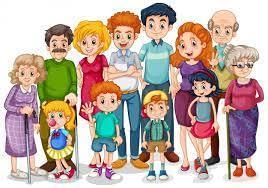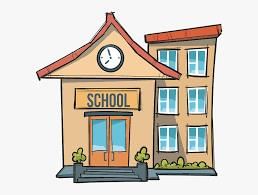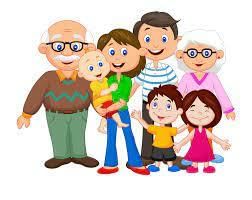Worksheet Solutions: Families Can Be Different | EVS for Class 3 PDF Download
Multiple Choice Questions (MCQs):
(i) Which family type consists of only parents and children?
(a) Nuclear family
(b) Joint family
(c) Extended family
(d) Single-parent family
Ans: (a)
A nuclear family consists of only parents and their children.
(ii) What term is used to describe a family consisting of a single parent and their children?
(a) Nuclear family
(b) Joint family
(c) Extended family
(d) Blended family
Ans: (d)
A blended family is one where a single parent marries another person, creating a family with stepchildren.
(iii) In an extended family, who typically lives together?
(a) Only parents and children
(b) Parents, children, and grandparents
(c) Parents and their cousins
(d) Single parents and their children
Ans: (b)
An extended family includes parents, children, and often grandparents living together.
(iv) What are the two main types of families discussed in the chapter "Families can be Different"?
(a) Joint family and extended family
(b) Nuclear family and blended family
(c) Joint family and nuclear family
(d) Single-parent family and large family
Ans: (c)
The chapter discusses two main types of families, which are joint families and nuclear families.
(v) In the story of Tara's family, who has adopted Tara?
(a) Her Amma
(b) Her nana
(c) Her Mausi
(d) Her Mausa
Ans: (a)
Tara has been adopted by her Amma, as mentioned in the story of Tara's family.
Q2: Fill in the Blanks.
(i) A _______ family consists of only parents and their children.
Ans: nuclear
(ii) In a _______ family, Sitamma lives with her parents, sister, grandparents, aunts, and uncles.
Ans: joint
(iii) Tara's primary caregiver is her _______.
Ans: nana
(iv) Krishna goes to college and leaves Kaveri at __________.
Ans: school
(v) The common theme among the families in the chapter is __________.
Ans: togetherness
Q3: True or False.
(i) A nuclear family includes grandparents, parents, uncles, aunts, and cousins. (False)
Ans: False
A nuclear family consists of only parents and their children.
(ii) In a joint family, everyone lives separately in their own houses.
Ans: False
In a joint family, multiple generations live together in the same house.
(iii) The chapter aims to teach only the concept of a nuclear family.
Ans: False
The chapter aims to teach various aspects, including the importance of family, different family types, and family rules and beliefs.
(iv) Sitamma's family is an example of a nuclear family.
Ans: False
Sitamma's family is an example of a joint family, not a nuclear family.
(v) Tara's nana takes care of her when she gets home from school.
Ans: True
Tara's nana looks after her when she gets home from school, as stated in the story of Tara's family.
Q4: Answer the following Questions.
(i) What are the basic two types of families?
Ans: The two basic types are:
- Joint Family - A joint family is one in which grandparents, parents, uncles, aunts, and cousins all live in the same house.
- Nuclear Family - Nuclear families are those in which the father, mother, and children all live under the same roof.
(ii) How many members are there in Sitamma’s family?
Ans: Sitamma lives with her grandmother, grandfather, elder chacha and elder cahchi, younger chacha and younger cahchi, bua, father, mother, Gitamma, tauji along with his three children.
(iii) Who is Tara's caretaker and how is she looked after?
Ans: Tara's maternal grandfather takes care of her. He takes care of almost everything for Tara like feeding her. helping her with the homework and playing with her in the free time.
(iv) What are the activities you do with your family?
Ans: I do a lot of activities with my family. All of us go for movies and dinner every weekend. I and my sister go for cycling together. I buy grocery with my father.
(v) How does family help in the development of the man?
Ans: Family makes a man social and intellectual. It also makes a person emotionally and physically powerful, honest, and confident.
|
45 videos|182 docs|48 tests
|
FAQs on Worksheet Solutions: Families Can Be Different - EVS for Class 3
| 1. What are some common types of family structures mentioned in the article? |  |
| 2. How do different family structures impact children's development? |  |
| 3. What role does culture play in defining family structures? |  |
| 4. Why is it important to recognize and respect different family types? |  |
| 5. How can society support families of different structures? |  |





















